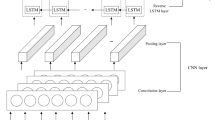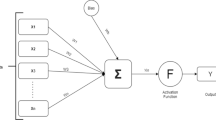Abstract
The Indian movie industry is the largest movie industry based on the number of movies produced per year. It is also the most diverse movie industry.It has been examined in a recent study that only a few of the movies achieved success. Revenue uncertainties have created immense pressure on the motion picture industry. Researchers and film producers continually feel a necessity to have some expert systems that predict the movie’s success probability preceding its production with reasonable accuracy. The diversity of the Indian movie industry makes the problem more difficult. Only a few researchers worked on Indian films, but most of them are targeted prerelease forecasting or have low prediction accuracy. This study focused on Indian movies and concentrated on the upcoming film’s success as soon as a quotient (director, cast) signed an agreement. This proposed forecasting has been considered as the earliest forecasting. Our study retrieved and used the last 30 years of Indian movie information covering all India’s regional movies.We had judicially chosen some of the movie’s intrinsic features and introduced a set of novel derived features to increase the forecasting accuracy. We had proposed a K-fold Hybrid Deep Ensemble learning Model (KHDEM), which includes Deep Learning models (DLM) and ensemble learning models. Finally, We made the prediction using a Logistic Regression (LR) classifier. We had implemented a binary classification model and achieved 96% accuracy, which outperforms all the benchmark models. The introduction of our derived features had improved the accuracy by 17.62%.This study highlights the potential of predictive and prescriptive data analytics in information systems to support industry decisions.



















Similar content being viewed by others
References
Abidi SMR, Xu Y, Ni J, Wang X, Zhang W (2020) Popularity prediction of movies: from statistical modeling to machine learning techniques. Multimed Tools Appl 79(47):35583–35617
Ahmad IS, Bakar AA, Yaakub MR (2020) Movie revenue prediction based on purchase intention mining using YouTube trailer reviews. Inf Process Manag 57(5):102278
Ahmed U, Waqas H, Afzal MT (2020) Pre-production box-office success quotient forecasting. Soft Comput 24(9):6635–6653
Apala KR, Jose M, Motnam S, Chan CC, Liszka KJ, de Gregorio F (2013) Prediction of movies box office performance using social media. In: 2013 IEEE/ACM international conference on advances in social networks analysis and mining (ASONAM 2013). IEEE, pp 1209–1214
Bae G, Kim HJ (2019) The impact of movie titles on box office success. J Bus Res 103:100–109
Bai W, Zhang Y, Huang W, Zhou Y, Wu D, Liu G, Xiao L (2020) DeepFusion: predicting movie popularity via cross-platform feature fusion. Multimed Tools Appl 79:19289–19306
Baimbridge M (1997) Movie admissions and rental income: the case of James bond. Appl Econ Lett 4(1):57–61
Basha SM, Rajput DS (2018) A supervised aspect level sentiment model to predict overall sentiment on tweeter documents. Int J Metadata Semant Ontol 13(1):33–41
Basha SM, Rajput DS (2019) Aspects of deep learning: hyper-parameter tuning, regularization, and normalization. In: Intelligent systems. Apple Academic Press, pp 171–186
Boccardelli P, Brunetta F, Vicentini F (2008) What is critical to success in the movie industry? A study on key success factors in the Italian motion picture industry
Castillo A, Benitez J, Llorens J, Luo XR (2021) Social media-driven customer engagement and movie performance: theory and empirical evidence. Decis Support Syst 145:113516
De Vany A, Walls WD (1999) Uncertainty in the movie industry: does star power reduce the terror of the box office? J Cult Econ 23(4):285–318
Deloitte. (2016). A report on, Indywood the Indian film industry. https://www2.deloitte.com/content/dam/Deloitte/in/Documents/technology-media-telecommunications/in-tmt-indywood-film-festival-noexp.pdf. Accessed Nov 2018
Deniz B, Hasbrouck RB (2012) What determines box office success of a movie in the United States, vol 757. Proceedings for the Northeast Region Decision Sciences Institute, pp 447
Du J, Xu H, Huang X (2014) Box office prediction based on microblog. Expert Syst Appl 41(4):1680–1689
Elberse A (2005) The power of stars: creative talent and the success of entertainment products. Paper presented at the INFORMS Marketing Science Conference, Emory University. https://www.hbs.edu/faculty/Pages/item.aspx?num=19356
Elberse A (2007) The power of stars: do star actors drive the success of movies? J Mark 71(4):102–120
Eliashberg J, Jonker JJ, Sawhney MS, Wierenga B (2000) MOVIEMOD: An implementable decision-support system for prerelease market evaluation of motion pictures. Mark Sci 19(3):226–243
Eliashberg J, Hui SK, Zhang ZJ (2007) From story line to box office: a new approach for green-lighting movie scripts. Manag Sci 53(6):881–893
Galvão M, Henriques R (2018) Forecasting movie box office profitability. J Inf Syst Eng Manage 3(3):1–9
Gopinath S, Chintagunta PK, Venkataraman S (2013) Blogs, advertising, and local-market movie box office performance. Manag Sci 59(12):2635–2654
Kolisetty VV, Rajput DS (2020) A review on the significance of machine learning for data analysis in big data. Jordanian J Comput Inf Technol (JJCIT) 6(01):1
Lash MT, Zhao K (2016) Early predictions of movie success: the who, what, and when of profitability. J Manag Inf Syst 33(3):874–903
Latif MH, Afzal H (2016) Prediction of movies popularity using machine learning techniques. Int J Comput Sci Netw Secur (IJCSNS) 16(8):127
Lee K, Park J, Kim I, Choi Y (2018) Predicting movie success with machine learning techniques: ways to improve accuracy. Inf Syst Front 20(3):577–588
Litman BR (1983) Predicting success of theatrical movies: An empirical study. J Pop Cult 16(4):159–175
Lutter M (2014) Creative success and network embeddedness: explaining critical recognition of film directors in Hollywood, 1900–2010, creative success and network embeddedness: explaining critical recognition of film directors in Hollywood, 190002010
Meenakshi K, Maragatham G, Agarwal N, Ghosh I (2018) A data mining technique for analyzing and predicting the success of movie. J Phys Conf Ser 1000(1):012100. IOP Publishing
Meiseberg B, Ehrmann T (2013) Diversity in teams and the success of cultural products. J Cult Econ 37(1):61–86
Meiseberg B, Ehrmann T, Dormann J (2008) We don’t need another hero—implications from network structure and resource commitment for movie performance. Schmalenbach Bus Rev 60(1):74–98
Mestyán M, Yasseri T, Kertész J (2013) Early prediction of movie box office success based on Wikipedia activity big data. PLoS One 8(8):e71226
Nelson RA, Glotfelty R (2012) Movie stars and box office revenues: an empirical analysis. J Cult Econ 36(2):141–166
Nithin VR, Pranav M, Sarath B, Lijiya A (2014) Predicting movie success based on IMDB data. Int J Data Mining Tech Appl 3:365–368
Oghina A, Breuss M, Tsagkias M, De Rijke M (2012) Predicting imdb movie ratings using social media. In: European conference on information retrieval. Springer, Berlin, Heidelberg, pp 503–507
Parimi R, Caragea D (2013) Pre-release box-office success prediction for motion pictures. In: International workshop on machine learning and data Mining in Pattern Recognition. Springer, Berlin, Heidelberg, pp 571–585
Prag J, Casavant J (1994) An empirical study of the determinants of revenues and marketing expenditures in the motion picture industry. J Cult Econ 18(3):217–235
Rajput DS, Thakur RS, Thakur GS (2012) Fuzzy association rule mining based frequent pattern extraction from uncertain data. In: 2012 world congress on information and communication technologies. IEEE, pp 709–714
Rajput DS, Reddy TSK, Raju DN (2020) Investigation on deep learning approach for big data: applications and challenges. In: Deep learning and neural networks: concepts, methodologies, tools, and applications. IGI global, pp 1016–1029
Sharda R, Delen D (2006) Predicting box-office success of motion pictures with neural networks. Expert Syst Appl 30(2):243–254
Simonoff JS, Sparrow IR (2000) Predicting movie grosses: winners and losers, blockbusters and sleepers. Chance 13(3):15–24
Singh J, Goyal G (2019) Anticipating movie success through crowdsourced social media videos. Comput Hum Behav 101:484–494
Taylor DG, Levin M (2014) Predicting mobile app usage for purchasing and information-sharing. Int J Retail Distrib Manag 42(8):759–774. https://doi.org/10.1108/IJRDM-11-2012-0108
Thirty BB (n.d.) The determinants of box office revenue: a case based study
Verma H, Verma G (2020) Prediction model for bollywood movie success: a comparative analysis of performance of supervised machine learning algorithms. Rev Socionetw Strateg 14(1):1–17
Walls WD (2005) Modeling movie success when ‘nobody knows anything’: conditional stable-distribution analysis of film returns. J Cult Econ 29(3):177–190
Wang H, Zhang H (2018, January) Movie genre preference prediction using machine learning for customer-based information. In: 2018 IEEE 8th annual computing and communication workshop and conference (CCWC). IEEE, pp 110–116
Yu X, Liu Y, Huang X, An A (2010) Mining online reviews for predicting sales performance: a case study in the movie domain. IEEE Trans Knowl Data Eng 24(4):720–734
Zaheer A, Soda G (2009) Network evolution: the origins of structural holes. Adm Sci Q 54(1):1–31
Zhang L, Luo J, Yang S (2009) Forecasting box office revenue of movies with BP neural network. Expert Syst Appl 36(3):6580–6587
Zhou Y, Zhang L, Yi Z (2019) Predicting movie box-office revenues using deep neural networks. Neural Comput & Applic 31(6):1855–1865
Funding
This research is funded by Vietnam National Foundation for Science and Technology Development (NAFOSTED) under grant number 102.05–2020.11.
Author information
Authors and Affiliations
Corresponding author
Ethics declarations
Ethical approval
This article does not contain any studies with human participants or animals performed by any of the authors.
Additional information
Publisher’s note
Springer Nature remains neutral with regard to jurisdictional claims in published maps and institutional affiliations.
Rights and permissions
About this article
Cite this article
Sahu, S., Kumar, R., Long, H.V. et al. Early-production stage prediction of movies success using K-fold hybrid deep ensemble learning model. Multimed Tools Appl 82, 4031–4061 (2023). https://doi.org/10.1007/s11042-022-13448-0
Received:
Revised:
Accepted:
Published:
Issue Date:
DOI: https://doi.org/10.1007/s11042-022-13448-0




